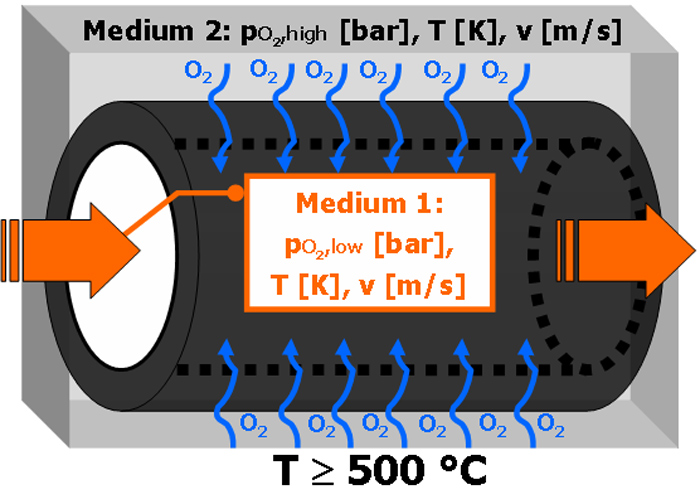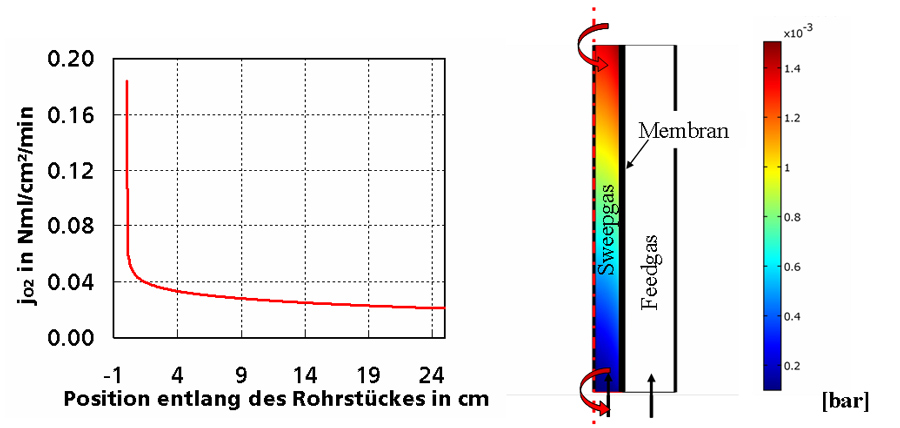

High temperature oxygen separation by ceramic membranes represent a key technology for the zero CO2 fossil fuel fired power generation. Furthermore a huge number of technologic applications for pure oxygen became realistic because of oxygen permeable membranes.
Using the Finite Element Method (FEM) the mass and energy transport through O2-permeable membranes is simulated for different modes of operation. Under consideration of the fluid dynamic, the heat and mass transfer as well as material specific anomalies a full coupled multi physics modeling is carried out. Thereby different membrane geometries can be modeled.
The modeling is based on a widespread experimental material characterization. Thus, the formation of oxygen vacancies (δ in ABO3-δ), T and pO2 sensible material properties as well as thermal effects from gas-solid reactions are included in the calculations. The allocation of the oxygen permeation and of the oxygen partial pressure along the membrane can be calculated in a realistic manner.
Starting from the like this calculated allocation of T, pO2 and δ thermal and chemical induced deformations are modeled. The transfer of the calculated strain in stress is performed using experimentally determined mechanical properties.
Using the FEM effects of varying flow conditions, temperatures and material specific anomalies on the membrane performance can be considered. Favorable working points for oxygen permeable membranes are detectable. The design of membrane modules as well as fundamental problems concerning the material and component behavior can be estimated.